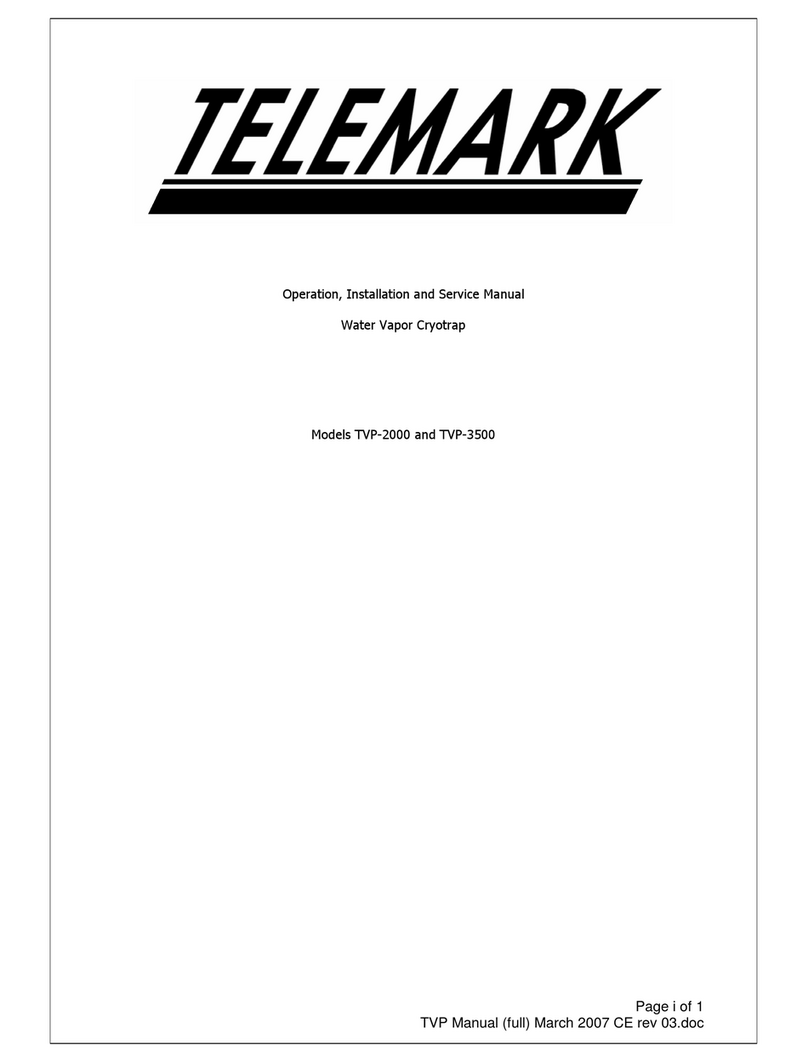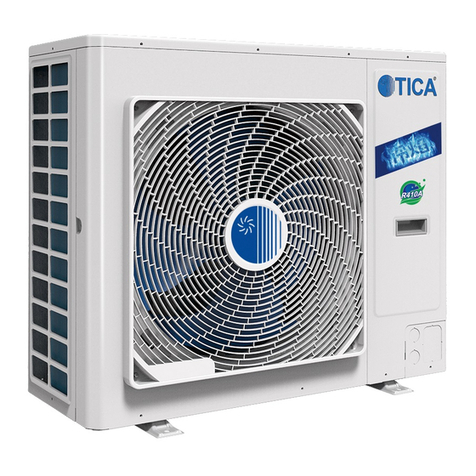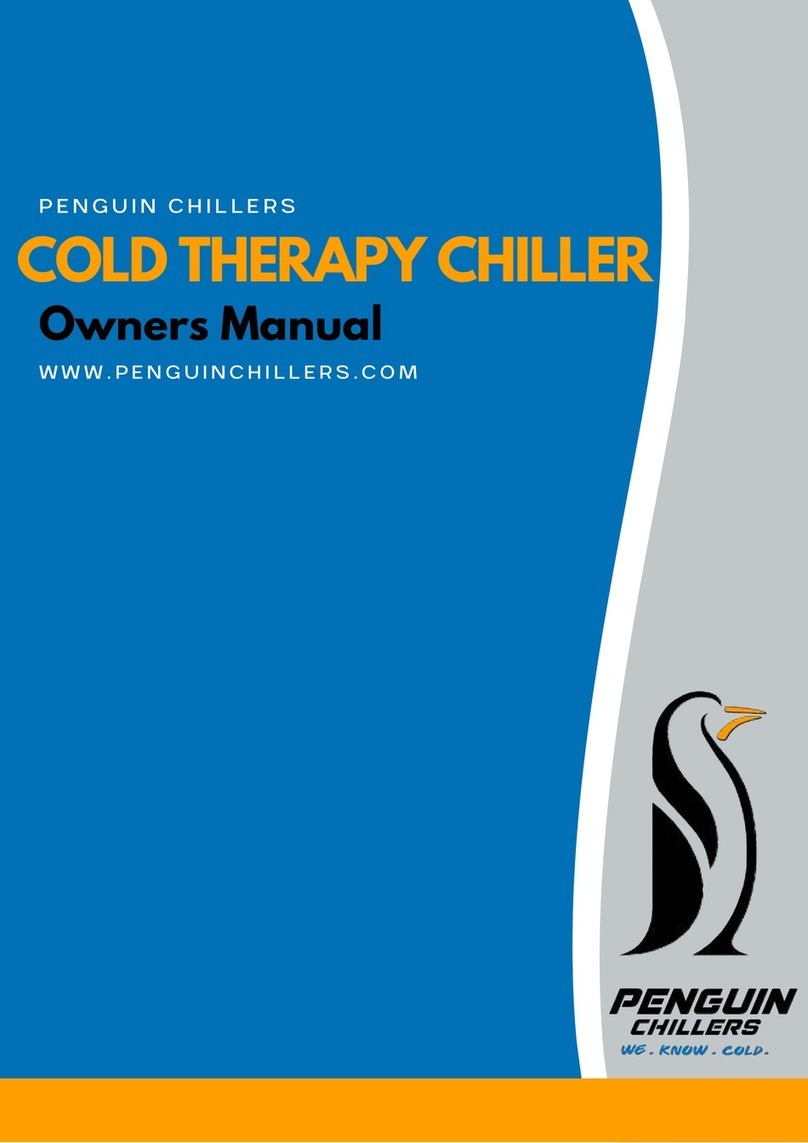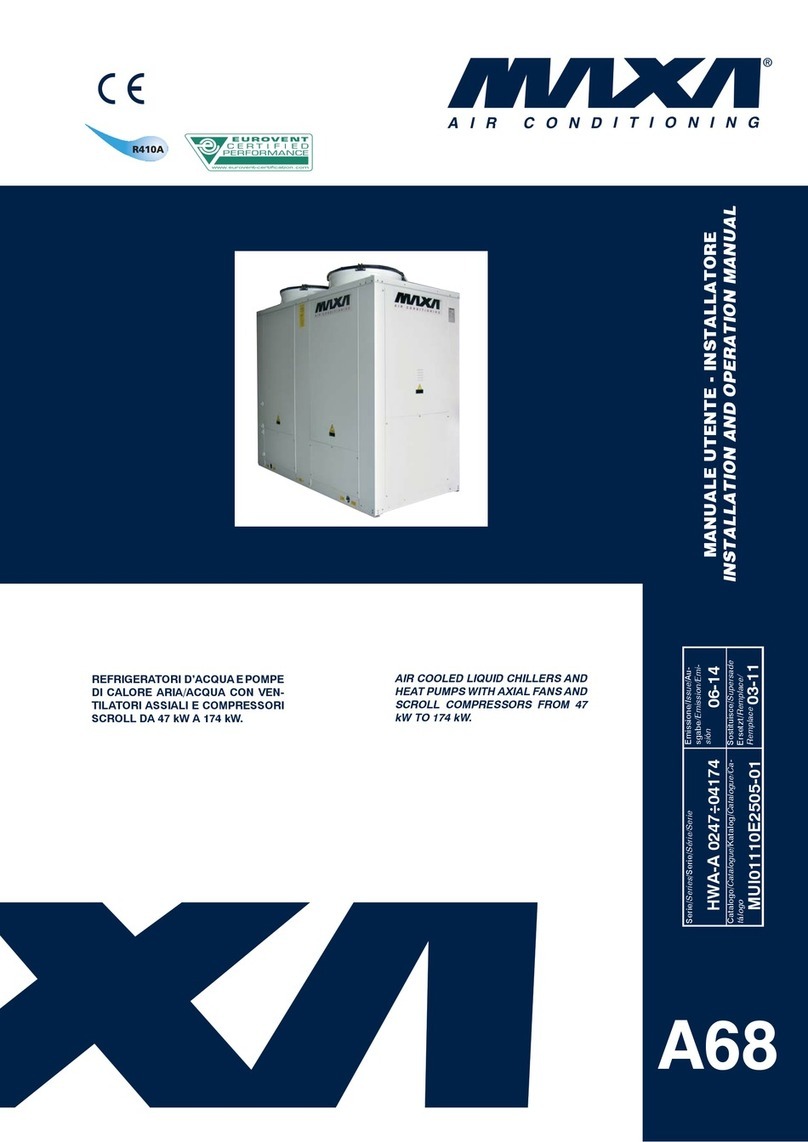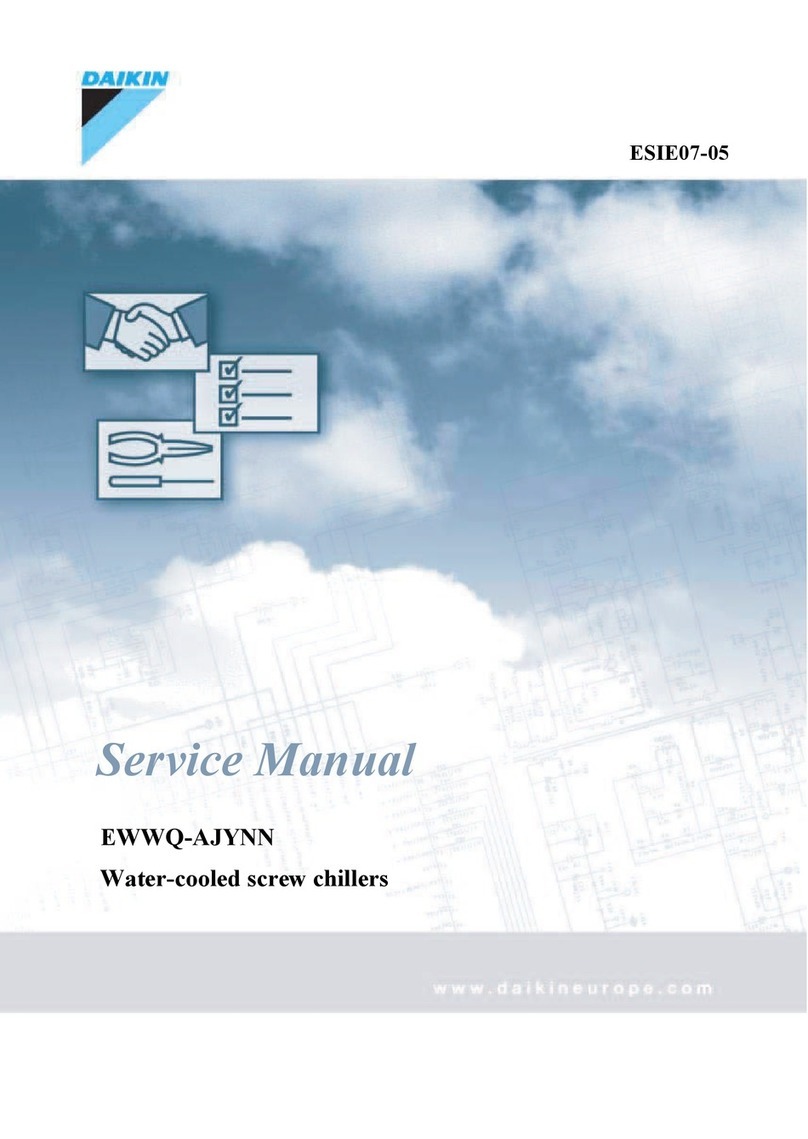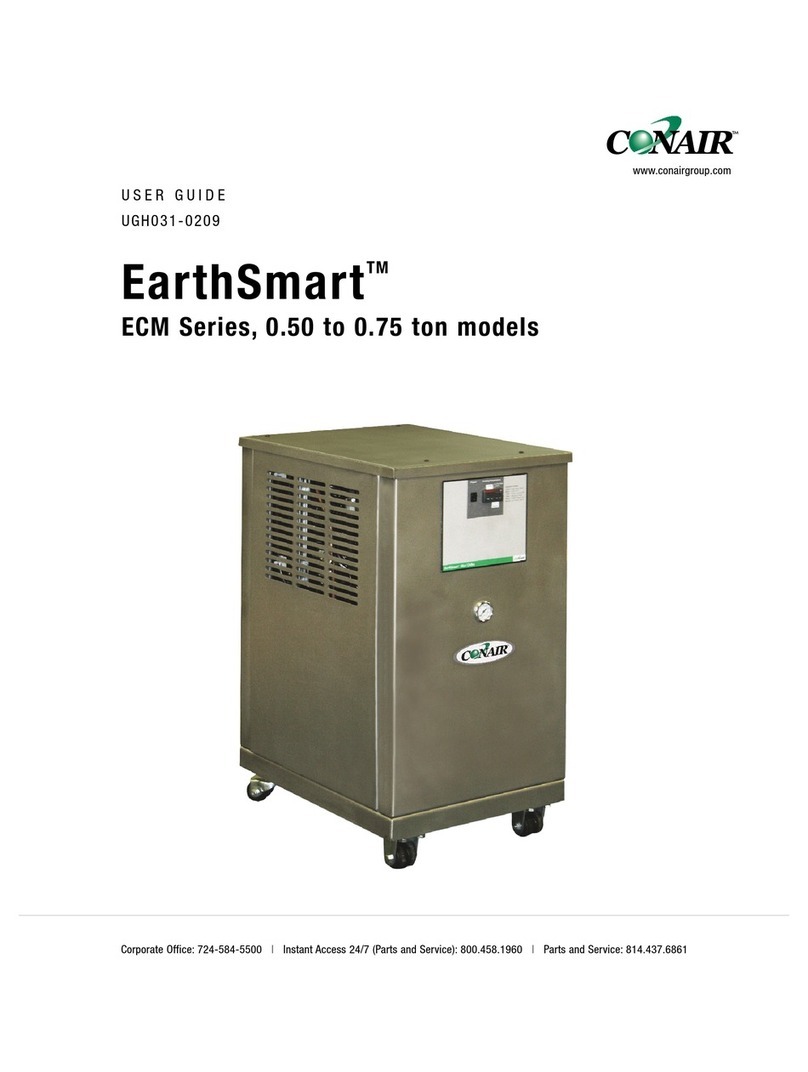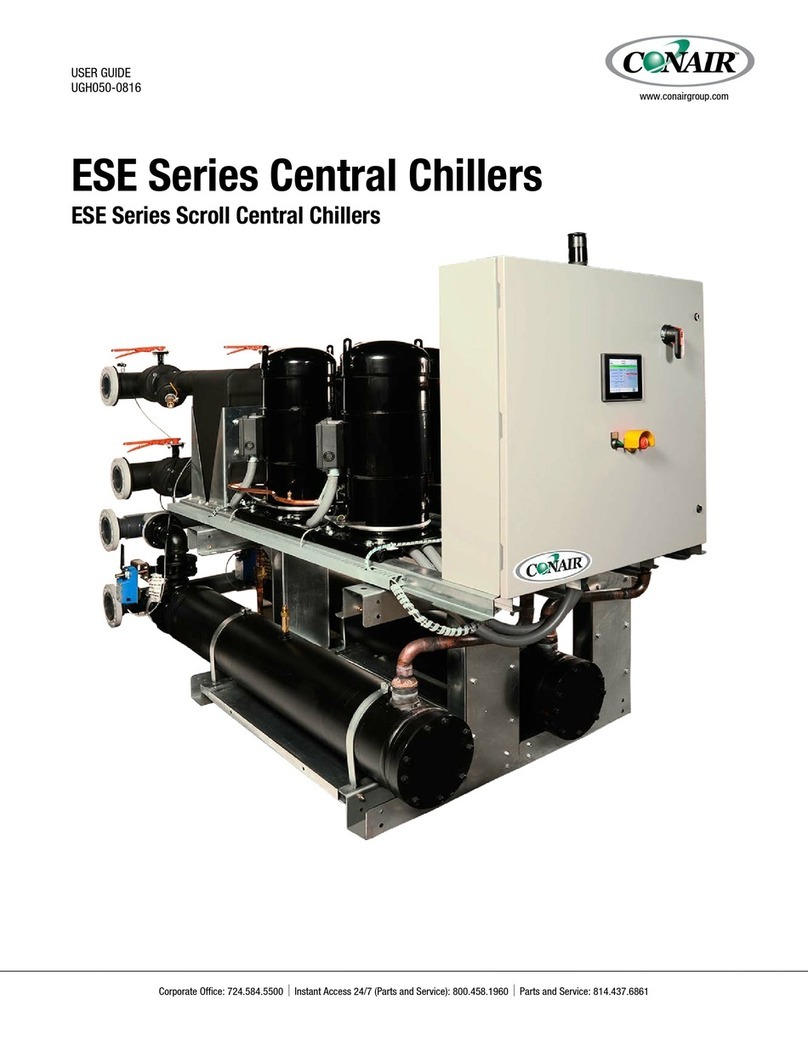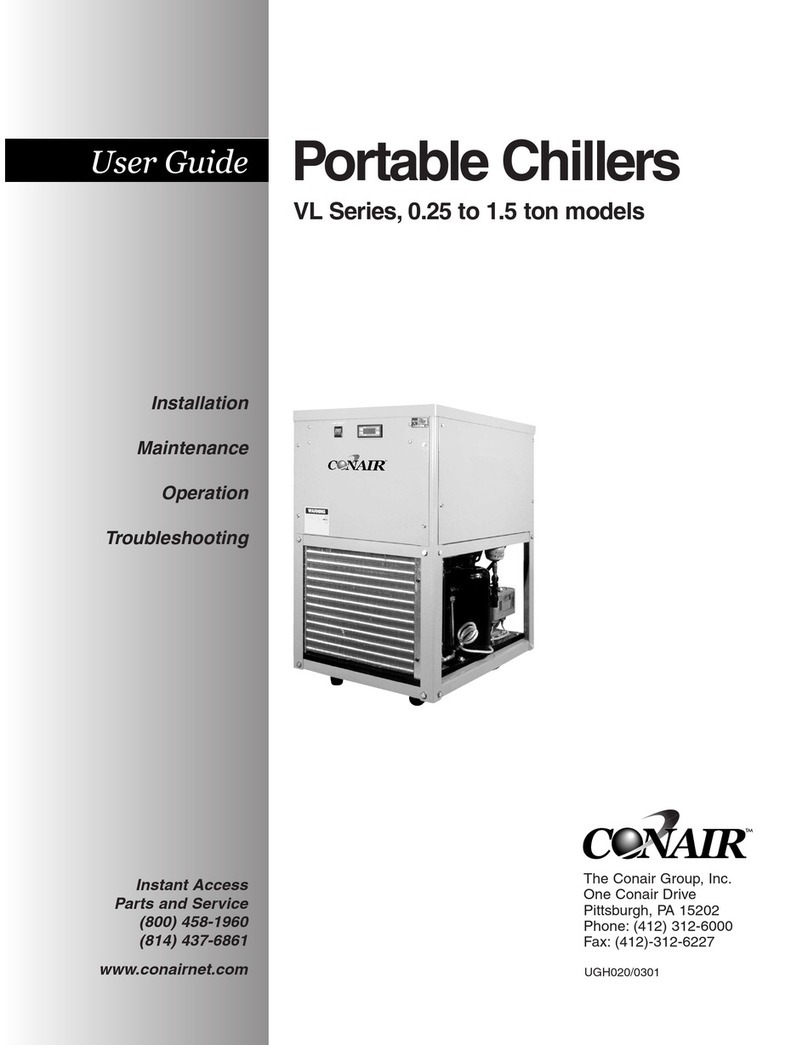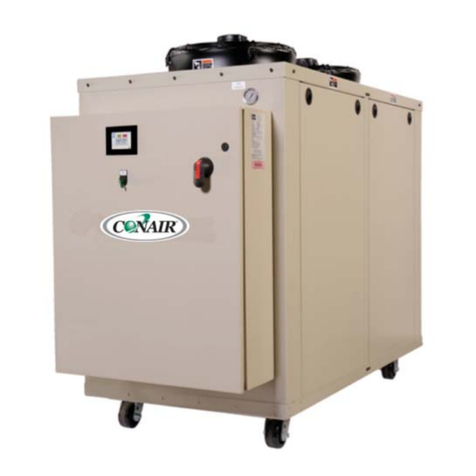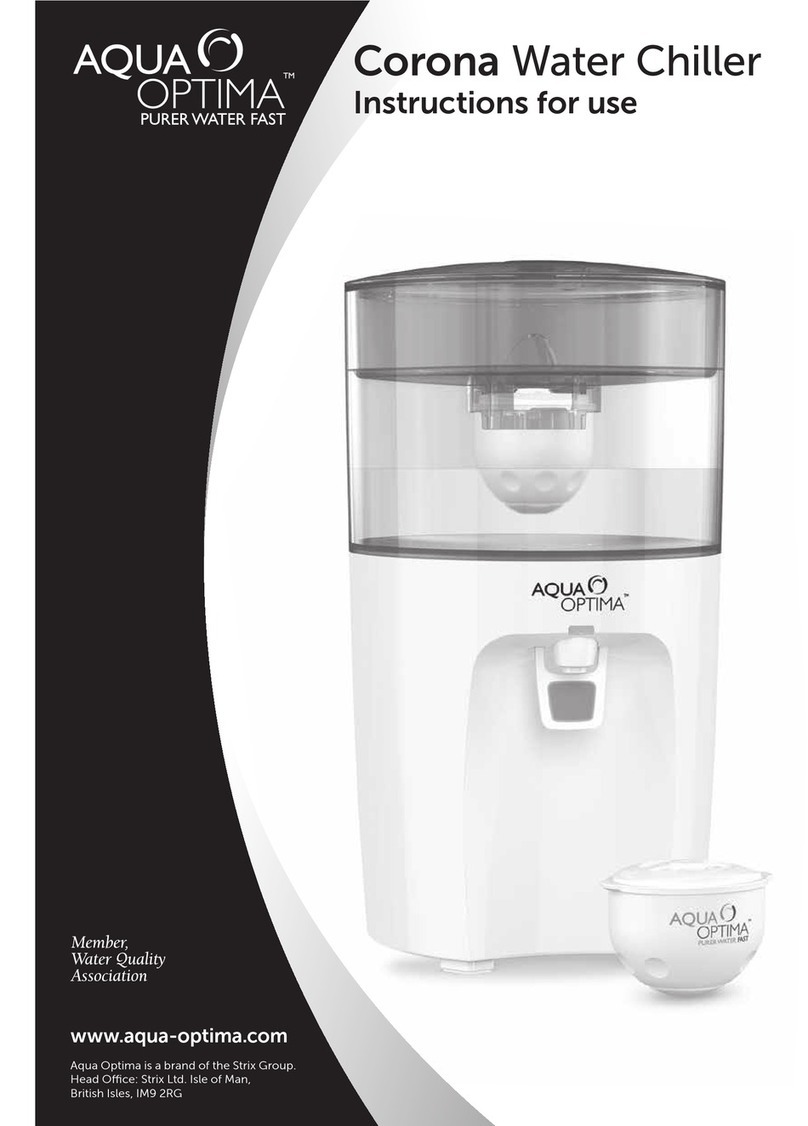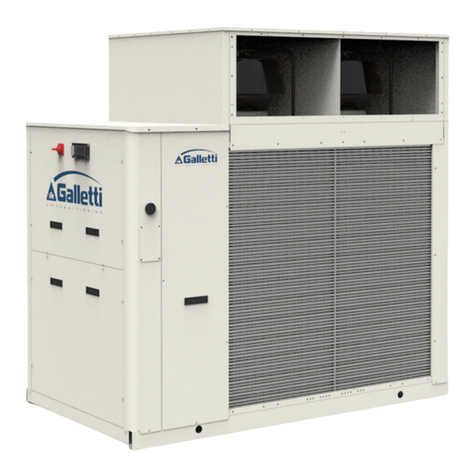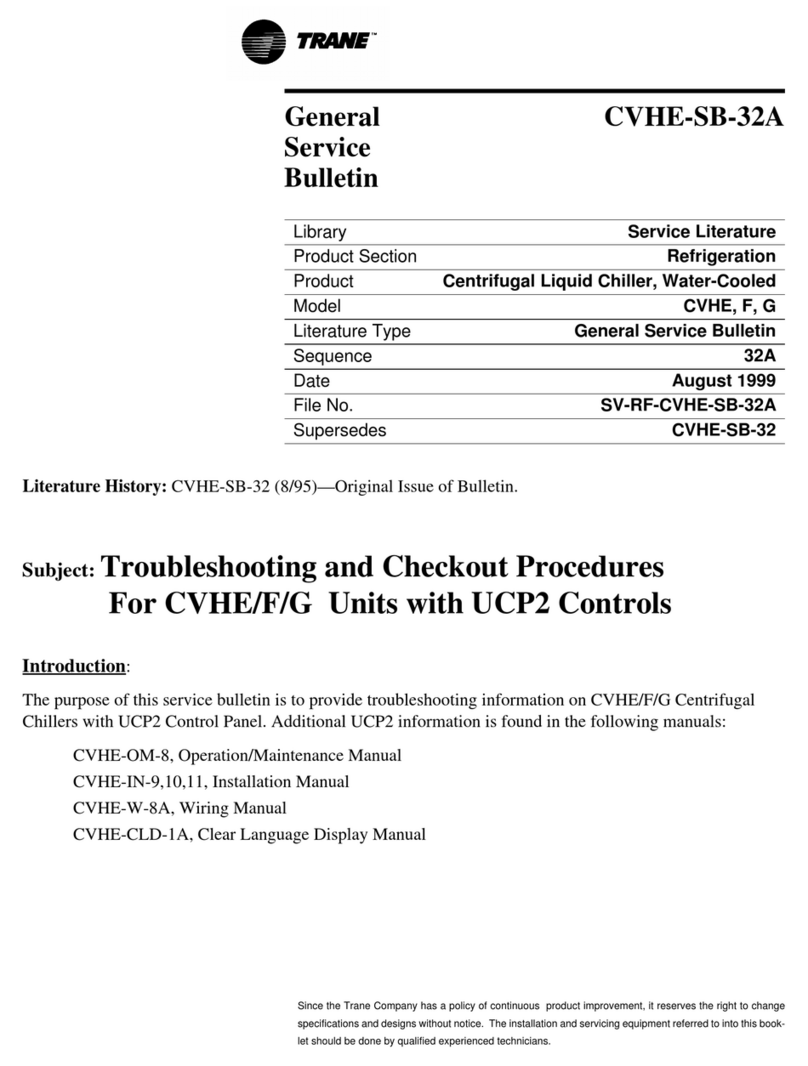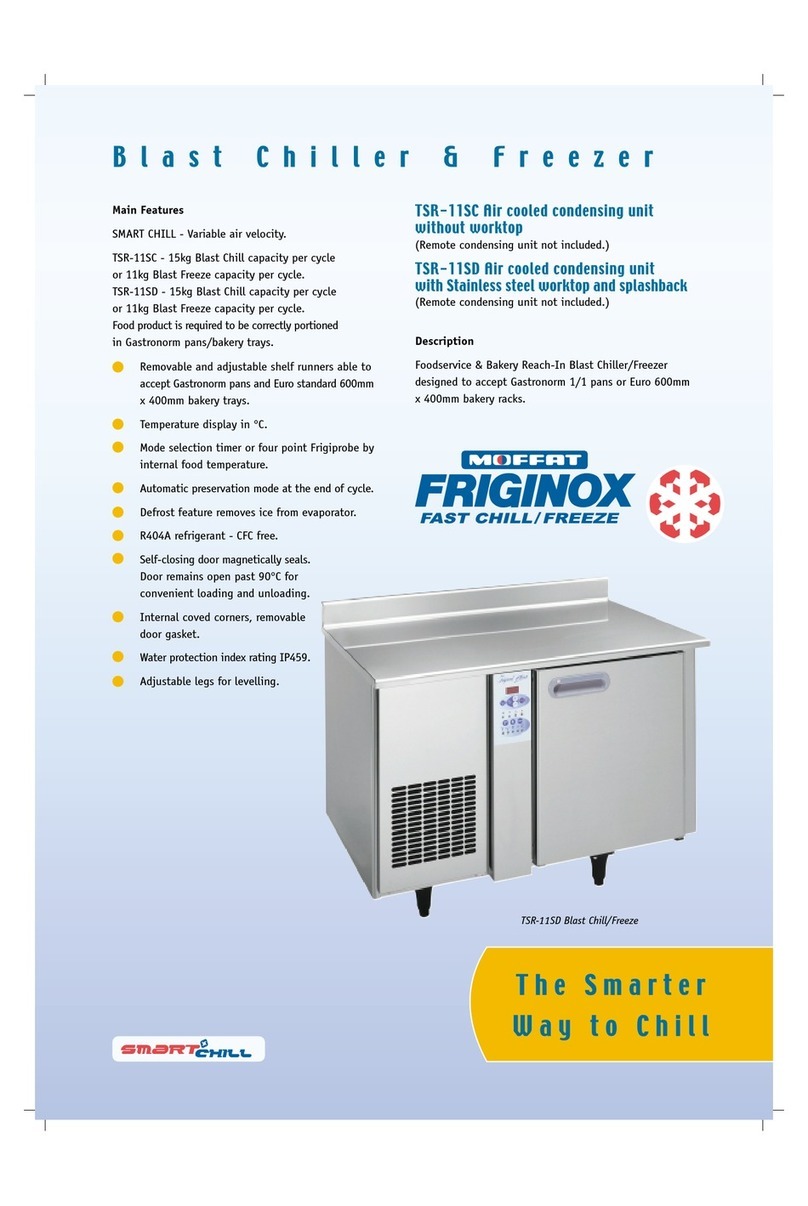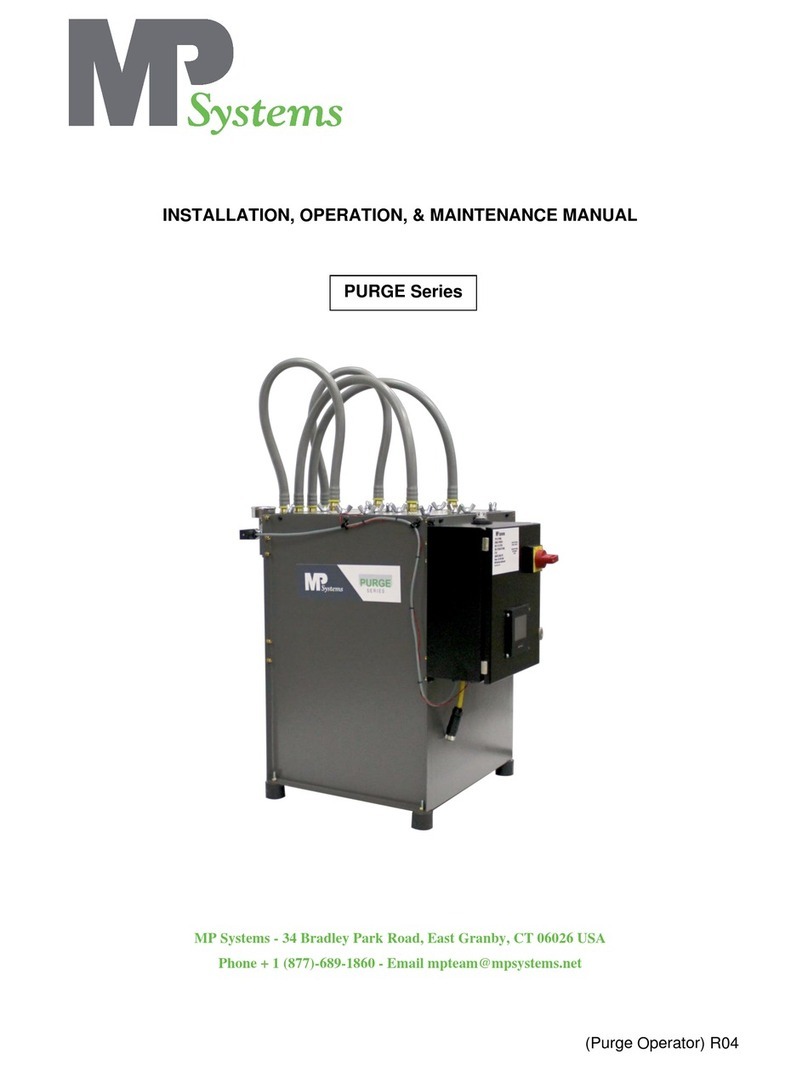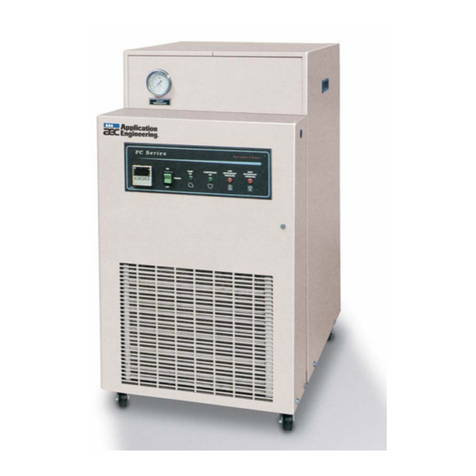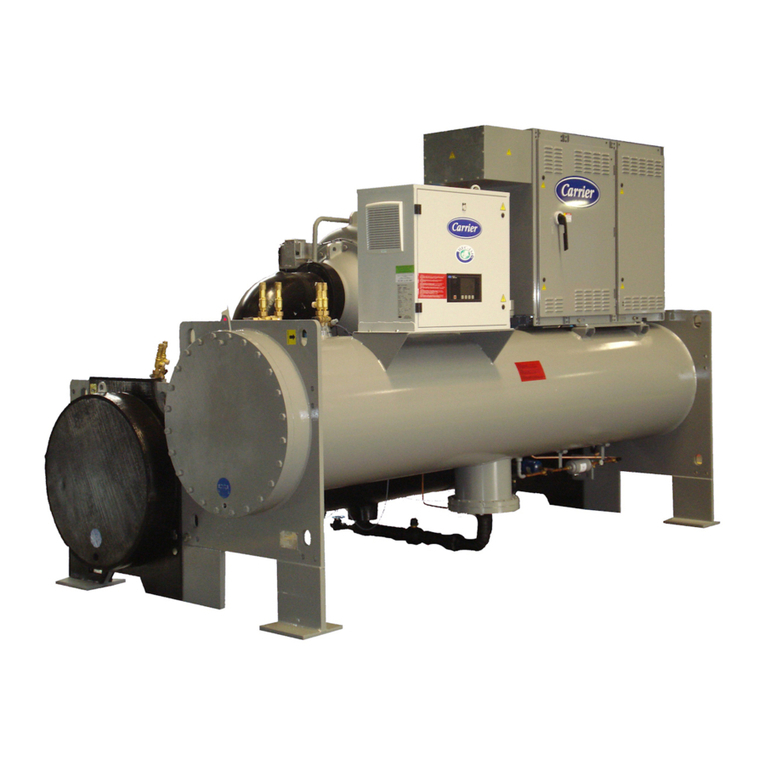
Checking the compressor . . . . . . . . . . . . . . . . . . . . . . . . . . . . . . . 3-13
Checking the water level gauge . . . . . . . . . . . . . . . . . . . . . . . . . . 3-13
PLC CONTROL
Initially warming the Chiller. . . . . . . . . . . . . . . . . . . . . . . . . . . . . . 3-14
Checking the pump for rotation. . . . . . . . . . . . . . . . . . . . . . . . . . . 3-15
Checking for leaks . . . . . . . . . . . . . . . . . . . . . . . . . . . . . . . . . . . . 3-16
Initially starting the Chiller. . . . . . . . . . . . . . . . . . . . . . . . . . . . . . . 3-17
Stopping the Chiller. . . . . . . . . . . . . . . . . . . . . . . . . . . . . . . . . . . . 3-18
4-1 Operation
TIC control features. . . . . . . . . . . . . . . . . . . . . . . . . . . . . . . . . . . . . 4-2
PLC control features . . . . . . . . . . . . . . . . . . . . . . . . . . . . . . . . . . . . 4-3
Before starting . . . . . . . . . . . . . . . . . . . . . . . . . . . . . . . . . . . . . . . . 4-4
TIC CONTROL
Starting/stopping the Chiller . . . . . . . . . . . . . . . . . . . . . . . . . . . . . . 4-7
Changing settings. . . . . . . . . . . . . . . . . . . . . . . . . . . . . . . . . . . . . . 4-7
Changing the setpoint temperature. . . . . . . . . . . . . . . . . . . . . . . . . 4-8
Menu features. . . . . . . . . . . . . . . . . . . . . . . . . . . . . . . . . . . . . . . . . 4-8
Tuning the Chiller . . . . . . . . . . . . . . . . . . . . . . . . . . . . . . . . . . . . . . 4-9
PLC CONTROL
Powering up . . . . . . . . . . . . . . . . . . . . . . . . . . . . . . . . . . . . . . . . . 4-16
Setup menu . . . . . . . . . . . . . . . . . . . . . . . . . . . . . . . . . . . . . . . . . 4-17
Running/stopping the Chiller. . . . . . . . . . . . . . . . . . . . . . . . . . . . . 4-18
Viewing Chiller run menu . . . . . . . . . . . . . . . . . . . . . . . . . . . . . . . 4-18
Changing setpoint temperature. . . . . . . . . . . . . . . . . . . . . . . . . . . 4-21
Changing high temperature deviation . . . . . . . . . . . . . . . . . . . . . . 4-22
Setting percent glycol . . . . . . . . . . . . . . . . . . . . . . . . . . . . . . . . . . 4-23
Selecting the temperature scale . . . . . . . . . . . . . . . . . . . . . . . . . . 4-25
Resetting PID settings. . . . . . . . . . . . . . . . . . . . . . . . . . . . . . . . . . 4-26
Setting fan setpoints. . . . . . . . . . . . . . . . . . . . . . . . . . . . . . . . . . . 4-27
ii l Table of Contents
